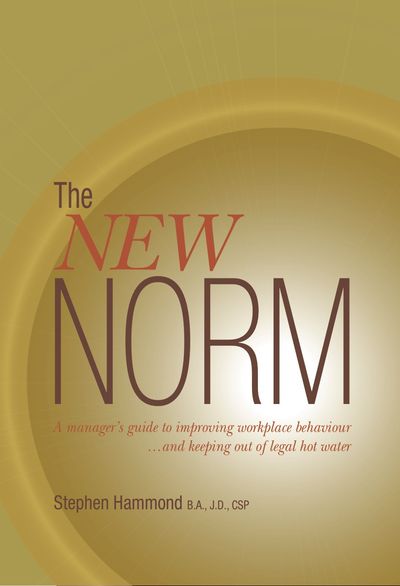Chapter eleven
THE NEW NORM moves on
Baltej Singh Dhillon was born in Malaysia in 1966 and immigrated to Canada at the age of sixteen. He trained to join the RCMP, but as a baptized Sikh, was required to wear a turban as a tenet of his religion. This precluded him from wearing the hat that formed part of the RCMP’s ceremonial uniform. In this he shared a dilemma with many Canadian Sikhs who felt pressure to comply with regulations against their beards and turbans.
Dhillon chose to challenge the regulation – an act that generated severe criticism, petitions, court challenges and even a death threat. But his perseverance paid off when on March 15, 1990, Canada’s Solicitor General Pierre Cadieux announced that Sikhs in the RCMP were welcome to wear their turbans and other religious symbols as part of their uniform.
Dhillon became an RCMP officer with the city of Surrey, B.C., where he worked on the case of Air India flight 182 in which a bomb exploded mid-flight, killing 329 people, 280 of whom were Canadian citizens.
It’s important that we have a police force that represents our population. However, during my training sessions, or after I’ve delivered a speech, some people will bring up the turbans on RCMP officers as a concern. Not everyone who does so is racist (or any more racist than me or any of us), but it’s a sign that some haven’t moved on.
Whenever anyone brings this up with me, I’m polite but quite clear: “That ship has sailed. You might as well bring up your concerns about women and dark-skinned Canadians getting the vote.”
There are probably many people who could benefit from taking my Respectful Workplace online course, where we learn about the demographic changes taking place in our country and ways to prevent racial discrimination and harassment.
There are still many who don’t want to move on, and here’s a high-profile example that drives this point home. On November 4, 2015, Canada’s governor general inducted Justin Trudeau as prime minister with his new cabinet. Among the appointments were many firsts, including the appointment of Harjit Sajjan as the new minister of national defence.
Minister Sajjan has an impressive resume as a former Vancouver Police detective and a decorated Canadian soldier and regimental commander who served three tours of duty in Afghanistan and one in Bosnia. Sajjan was born in India and at the age of five immigrated to Canada with his family.
As a teenager he was baptized as a Sikh, and as such observes the five articles of faith, often referred to as the “Five Ks.” One of these is the Kesh, or uncut hair. As a result, like other baptized Sikhs in Canada and around the world, Sajjan wears a turban.
Less than twenty-four hours after he was sworn in, an officer in the Canadian Armed Forces posted “inappropriate comments” on Facebook about the new minister. Once the military discovered this, the officer removed the posting and thus far the military isn’t revealing the exact contents of the post.
However, a spokesperson for the Armed Forces stated, “Racist attitudes are not compatible with military ethos and with effective military service.” In fact, an email from the military’s top-ranking non-commissioned officer was sent to Canadian troops about the incident, stating, “It’s totally unacceptable. We already deal with conduct problems on a daily basis in our ranks and it’s our duty, and that of our leaders, to put an end to it immediately. I was made aware of this incident and to say that I am mad is not the word.”
It just lets us know that even when someone has risen to the top, due to merit, hard work (and in this case, enough votes from the electorate), there are still people who insist on staying in the past. Even if there is something that “bugs” us about certain changes in our world, there’s a time to move on; when we encounter others complaining about these old gripes, do them a favour and just say, “move on.”
The OLD NORM
- speaks about men wearing turbans in the RCMP, for example, where “these people” have come to “our” country and are imposing their culture on “us.”
- thinks Christianity is Canada’s official religion and any recognition of other religions violates the rights of Christians.
- doesn’t accept that times have changed and Canada is a multicultural country.
- suggests more qualified light-skinned men are passed over for jobs given to dark-skinned people, never considering their qualifications.
The NEW NORM
- realizes that times change and not everything done in the past was a good thing.
- may struggle with some of the changes taking place around him, but tries his best to understand and accept them.
- doesn’t harp on changes that are still a challenge for her, especially when she realizes the world is not moving backwards.
- knows, and is likely proud of Canada’s multicultural population.
Suggestions for the New Norm:
01
Accept our stereotypes. Our stereotypes and prejudices, ingrained in us, don’t make us bad people. Everyone has them, from the Dalai Lama to the Pope. Sometimes I’m amazed what disrespectful words pop into my head. However, for the most part, I’m no longer surprised. I accept that they are a part of me and will impact my judgment…but only if I let them.
02
Don’t act on our stereotypes. It’s not what pops into our heads. It’s what words we speak and actions we take. I’m certainly not perfect on this front, but when I know my prejudices and stereotypes might influence my decision-making, I do something. I consult with someone else to help me with a decision, or make sure I give more consideration to my thoughts. I certainly hope I’ve evolved enough that I don’t verbalize my prejudices, because that makes it hard to regain the trust of others.
03
Use logic about changing times. Take for example, men wearing turbans in the RCMP. We can ask ourselves or others, “If we want to catch ‘bad guys,’ who are from all kinds of cultures, religions, colours of skin and backgrounds, does it make sense to exclude people from our national police force, which represents the Canadian population?” Putting it that way, the answer is obvious.
This chapter lets you know
there are Canadians who aren’t willing to move on to accept the racial makeup of our
country.
For more examples of other very inappropriate behaviours, consider reading
Chapter 25: The New Norm doesn’t catcall women (honestly?)
Purchase a copy of The New Norm, or if you think all your supervisors and managers, could learn many valuable lessons about creating a respectful workplace, free of harassment, bullying and discrimination, you can get volume discounts.
What one reader has to say about Stephen’s book, The New Norm
“Stephen Hammond’s book, ‘The New Norm’ is easy to follow and full of common sense. I loved the real case examples, older ones that stand the test of time and new ones that are relevant in the ever-changing landscape of the work environment. He categorizes behaviour as it was and as it should be - what every employer should strive for.”
Jackie Gruber, Human Rights and Conflict Management Officer
University of Manitoba
Respectful Workplace Online Training Course
If you, your employees or your managers want more information,
sign up for my new online training course:
The Respectful Workplace in Canada.
With 10 modules of useful, relevant and current information,
this course can help everyone at your workplace.
This may be the best online harassment training your people will get.
Stephen Hammond is a lawyer turned speaker and consultant in the field of harassment, sexual harassment, bullying and discrimination at work.
The New Norm is Stephen’s third book.
Here’s more information about Stephen.




